 I finished my “mastering” process, such as it is, a few minutes ago, and now I’m listening through to make sure there’s nothing egregiously wrong with any of the tracks. I’m also going to burn a CD (only the 3rd one for this project) to listen to in the car, mainly to make sure my track-to-track transitions work, since this is the first time I’ve done a “gapless” album.
I finished my “mastering” process, such as it is, a few minutes ago, and now I’m listening through to make sure there’s nothing egregiously wrong with any of the tracks. I’m also going to burn a CD (only the 3rd one for this project) to listen to in the car, mainly to make sure my track-to-track transitions work, since this is the first time I’ve done a “gapless” album.
I tried to make most of the songs blend relatively seamlessly one into the next, or at least to transition directly with no silence in between. Kind of makes up for not having a really cohesive overarching concept.
Mastering… whew. This has always been a weak point for me. I read through some of the mastering threads, and it made me realize how much I don’t know. I think I’ve managed to get pretty good with my recording quality, but I am definitely still an amateur, and when it comes to mastering, if it’s good, it’s just a matter of getting lucky.
I feel like I really screwed up the mastering of last year’s RPM album, with too much compression and some bad clipping on some tracks, but I think I’ve improved a bit since then. The Bee LP! turned out pretty good, but I think that was just dumb luck, and the fact that all of the tracks were fairly similar in instrumentation and sonic quality, so what I got out of GarageBand was already pretty close to “mastered” already — I just had to apply some normalization.
The tracks on this album are way too varied for that though, so I had to experiment a bit to get a mastering “configuration” (as it were) that worked.
I should probably get Ozone, but for now I’m still using my OLD copy of Sound Studio (version 2) to do my mastering. It lacks a limiter, which is all I really want, so I end up having to futz with the dynamic compression filter instead to get what I want.
Probably my other biggest problem is just a necessary limitation of how I have to work in a house with kids. I’m almost exclusively recording with headphones — in fact, with the “step-up” Sony earbuds I use with my iPhone. I should probably devote some of this year’s “music budget” (yes, this year it looks like I may actually have one!) to some better recording gear and not just new instruments. But, anyway, there it is.
So, a big thing I have to do in mastering is strip out anything that’s in the sonic ranges I can’t hear on my headphones — I don’t want a bunch of rumbling bass or high pitched whines that I can’t even hear to be in the mix and then bring it over to a decent sound system and wonder where all that garbage came from!
So… I run a high pass and a low pass, then I adjust the overall volume a bit if necessary, and then I apply dynamic compression. Not too much, just cutting off the peaks really, and boosting the overall signal to just below the saturation point.
Now I’m listening to the whole thing to make sure there’s no (well, not a LOT of) clipping. And to make sure there weren’t any glitches in the mixdowns from GarageBand. I already caught one of those and had to redo the mixdown out of GB tonight.
If all goes well, I will post the entire album as free MP3 downloads here tomorrow (and update the streaming tracks to the final versions). Stay tuned for the big announcement!


